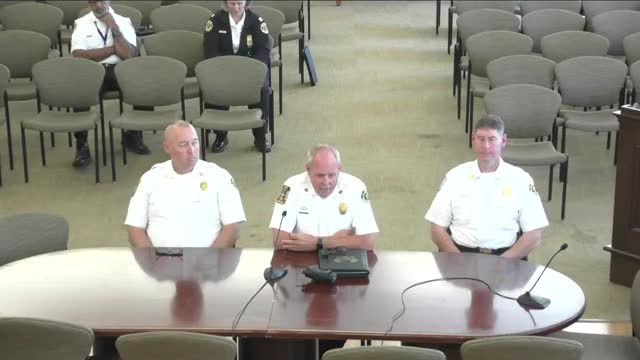Fire Department Faces Supply Chain Crisis for New Vehicles
September 10, 2024 | Annapolis, Anne Arundel County, Maryland
This article was created by AI summarizing key points discussed. AI makes mistakes, so for full details and context, please refer to the video of the full meeting. Please report any errors so we can fix them. Report an error »

In a recent government meeting, officials discussed the ongoing challenges related to the procurement of fire and emergency vehicles, highlighting significant delays attributed to supply chain issues exacerbated by the COVID-19 pandemic. The council approved the order of a new fire engine two budgets ago, with hopes for delivery by April of next year. However, the process has been prolonged, taking over two years due to workforce shortages and parts availability.
The fire department is also awaiting the delivery of a medic unit, which is expected to be in production by July 2024. Officials explained that the delays stem from issues with chassis supply and a lack of personnel at manufacturing plants. The situation is compounded by a national demand for emergency vehicles, with larger departments often placing bulk orders that push smaller orders further down the production line.
The discussion also touched on the financial implications of these delays. If a new fire engine were ordered today, it would cost approximately $250,000 more than the previously approved budget. Additionally, the department is facing challenges in maintaining a vehicle replacement schedule, as simultaneous replacements could strain the budget and resources.
Officials emphasized the importance of planning for future needs, particularly as the industry shifts towards electric vehicles, which come with significantly higher price tags. The department is committed to ensuring that its fleet remains efficient and capable of responding to emergencies, despite the hurdles presented by the current supply chain landscape.
In response to a question about non-emergency calls, officials outlined the process for responding to residents in high-rise buildings when elevators are out of service. Fire and medic units are dispatched to assist individuals who cannot navigate stairs, utilizing specialized equipment to ensure safe transport.
Overall, the meeting underscored the complexities of managing emergency services in the face of ongoing supply chain disruptions and the need for strategic budgeting to address future challenges.
The fire department is also awaiting the delivery of a medic unit, which is expected to be in production by July 2024. Officials explained that the delays stem from issues with chassis supply and a lack of personnel at manufacturing plants. The situation is compounded by a national demand for emergency vehicles, with larger departments often placing bulk orders that push smaller orders further down the production line.
The discussion also touched on the financial implications of these delays. If a new fire engine were ordered today, it would cost approximately $250,000 more than the previously approved budget. Additionally, the department is facing challenges in maintaining a vehicle replacement schedule, as simultaneous replacements could strain the budget and resources.
Officials emphasized the importance of planning for future needs, particularly as the industry shifts towards electric vehicles, which come with significantly higher price tags. The department is committed to ensuring that its fleet remains efficient and capable of responding to emergencies, despite the hurdles presented by the current supply chain landscape.
In response to a question about non-emergency calls, officials outlined the process for responding to residents in high-rise buildings when elevators are out of service. Fire and medic units are dispatched to assist individuals who cannot navigate stairs, utilizing specialized equipment to ensure safe transport.
Overall, the meeting underscored the complexities of managing emergency services in the face of ongoing supply chain disruptions and the need for strategic budgeting to address future challenges.
View full meeting
This article is based on a recent meeting—watch the full video and explore the complete transcript for deeper insights into the discussion.
View full meeting
